Featured Articles
Of Boxing, Fathers, And Sons, And An ‘Adults Only’ Trip To Barclays
I attended Saturday Night’s Golden Boy fight card with my dad, who drove from Buffalo to Brooklyn for the occasion.
If baseball is America’s communion ground for fathers and young sons, why shouldn’t boxing be similarly sanctified for adult sons bonding with their retired fathers? The Sweet Science is, if nothing else, America’s most “adult” sport. And perhaps overlooked in boxing’s much-ballyhooed decline is its fundamental failure to appeal to children in a culture where everything “is for the children” and where the phrase “Adults Only” seems relic of a barbarian past. Yes, heaven forbid adults be granted their pastimes and pleasures without guilt and apology.
So rather than walking hand in hand around Yankee Stadium, where the bright sunlight and emerald grass advertise ready-made virtue, my dad and I walked beer-to-beer in the concrete tunnels of the Barclays, where reeking floors and scantily-clad dates advertised the vices of old. Along for the ride was my younger brother, Pop’s son from another marriage. Sixteen years my junior, it meant three generations were represented. And as if we were three geological layers tracing the extinction of a sport, my dad knew everything about boxing, I knew a middling amount, and my little brother knew nothing. But we were all along for the ride.
We didn’t expect it to be a very good ride. As everyone knew, this Golden Boy card served no purpose other than to drum up interest in a future “superfight” between WBA/WBC light welterweight champion Danny Garcia and IBF light welterweight champion Lamont Peterson. In tonight’s separate contests, both men would make easy work of their unranked opponents, and fans watching live and on Showtime were paying to watch champs chomp on chumps in tune-ups for a unification bout. So lopsided were the matchups, that when the card was announced, ESPN’s Teddy Atlas fumed that the sport he loves has “no respect, no credibility” because Salka was not a top-15 contender (he wasn’t even top-50) and the WBA was therefore violating its own rules by sanctioning Garcia’s title defense (in the end, the WBA and WBC reversed course and did not sanction the bout). Many speculated the best fight of the night might be the under-under-card battle between Daniel Jacobs (27-1, 24 KO’s) and Jarrod Fletcher (18-1, 10 KO’s) for the vacant WBA middleweight title. Yet even there, Fletcher was considered a heavy underdog.
But as my father said, “I’m used to watching crap boxing. I just want to spend time with my sons,” and so exhibited the kind of philosophical attitude that behooves a boxing fan as he walks through valley of his sport: through madness and folly and vexation of spirit. Completing the profile, dad admitted to the pitiable optimism which sustains us when he went on to say, “And you never know. When two guys are throwing leather strange things can happen,” but swiftly mocked his own naiveté, “and hey –if they don’t –we’ll still get drunk.” That’s the fight fan for you: he’s a sucker, but he knows he’s a sucker, and that’s wisdom that rivals anything in Ecclesiastes. It’s something I love about our sport: baseball fans are statisticians, but fight fans are philosophers.
Thanks to that philosophy, we were able to enjoy our evening of farce. The crowd still had its characters with their signature cheers. The red-white-blue ring was still beautiful under the lights. And as in a Bellows painting, the crowd still rose, roared, and threw uppercuts at the air when a KO was near. As for what happened in the ring? Edgar Santana at least demonstrated heartbreaking toughness as he endured at age 35 the most sustained bodywork I had ever seen. By Round 5 the crowd winced and groaned as one at every Lamont Peterson left hook to the liver. When Santana gamely came out round after brutal round, we nodded solemnly at his resolve; his hopeless beating was for us a meditation on matters profound. And maybe because I’ve never been much good at meditation, I was relieved when his corner tossed the towel in the 10th.
About the other “fights,” there’s even less to say. Brooklyn native Jacobs outclassed the Aussie Fletcher, whose feet moved too much and whose head didn’t move enough: faults that might have been less noticeable had he been able to punch. Fittingly enough, the main event was the worst of the bunch, as Danny Garcia turned Rod Salka into a slapstick punch-line. Aaron Lowinger suggested to me that maybe Garcia’s camp simply wanted a highlight knockout to put on Youtube. Well, they got it –congratulations. But they might as well have set Garcia up against any average joe with the discipline to hit the gym 5 days a week. I saw myself in Salka: that would be me, if I trained as hard as I could for six months. That would be me, or any of us, if pitted against a truly elite athlete. It’s a humbling reminder that we should not –as Salka did one second before his lights got knocked out –beat our own chests too fiercely.
For me, the real story of the night was about fathers and sons. It was fitting to attend the show with my dad because fatherhood is a theme that runs through so many boxers’ stories, and tonight’s contestants were no exception. Lamont Peterson famously grew up parentless. Rod Salka Sr. works as a cornerman for his son. But the biggest story of the night was arguably the relationship between Danny “Swift” Garcia and his father, Angel, who works as his son’s trainer and adviser. Although Garcia’s manager Al Haymon bears most of the blame for this laughable card, Angel Garcia ostensibly played a key role as well. If Angel wields the kind of influence he boasts, he should have vetoed the fight as soon as Haymon proposed it.
The father-son bond is stronger in boxing than in any other sport, although many top fighters have had to loosen the tie as they matured. Floyd Mayweather Jr., Roy Jones Jr., Sugar Shane Mosely are just three fighters who famously fired their fathers as trainers. As for Danny Garcia, he already had a reputation of being one of the most protected fighters in the game, and simply by agreeing to this card he’d lost more than he could ever hope to win against Salka in the ring. Danny Garcia is lucky to be in one of the most interesting weight classes in all boxing. This isn’t a case of an unbeaten hero unable to shine for lack of worthy opponents. But, Angel seems to have taken to heart the good doctor Sigmund Freud when he said, “I cannot think of any need in childhood as strong as the need for a father’s protection.”
Judging by the thin and cynical Barclays crowd and by the jeering comments which overwhelm any Danny Garcia internet thread, the story of Danny Garcia at present is not the kind of tale dad read to you in your childhood. It’s not the story of a fearless hero who faced impossible challenges because he had the heart of a champion. No, it is the kind of story dad tells you now, as an adult: about a world that goes from bad to worse: Aetas parentum, pejor avis, tulit nos nequiores mox daturos progeniem visiosiorem (the generation of our parents, worse than that of our grandparents, has created us worse again and destined soon to bring forth yet more vicious progeny.) It’s a story dads have been telling sons since the beginning of time. But in the case of Danny Garcia, it comes with a unique twist of tragedy. Because it’s not his father reading the story, it’s his father helping to write it.
-
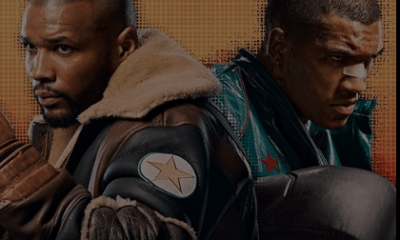
 Featured Articles4 weeks ago
Featured Articles4 weeks agoAvila Perspective, Chap. 323: Benn vs Eubank Family Feud and More
-
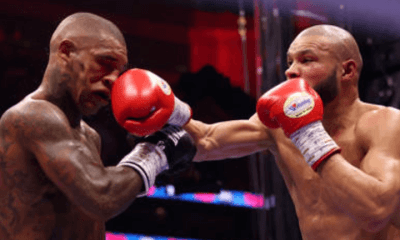
 Featured Articles4 weeks ago
Featured Articles4 weeks agoChris Eubank Jr Outlasts Conor Benn at Tottenham Hotspur Stadium
-
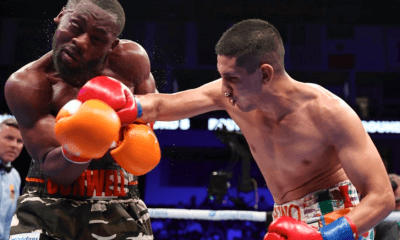
 Featured Articles3 weeks ago
Featured Articles3 weeks agoJorge Garcia is the TSS Fighter of the Month for April
-
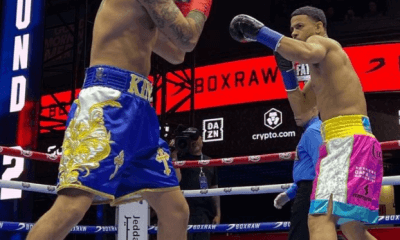
 Featured Articles3 weeks ago
Featured Articles3 weeks agoRolly Romero Upsets Ryan Garcia in the Finale of a Times Square Tripleheader
-
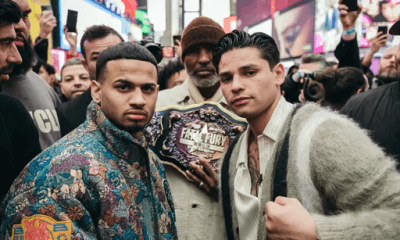
 Featured Articles3 weeks ago
Featured Articles3 weeks agoAvila Perspective, Chap. 324: Ryan Garcia Leads Three Days in May Battles
-
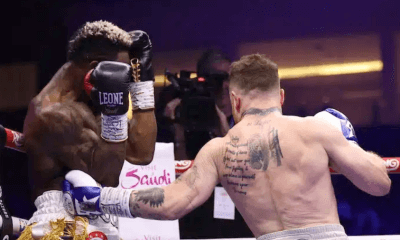
 Featured Articles3 weeks ago
Featured Articles3 weeks agoCanelo Alvarez Upends Dancing Machine William Scull in Saudi Arabia
-
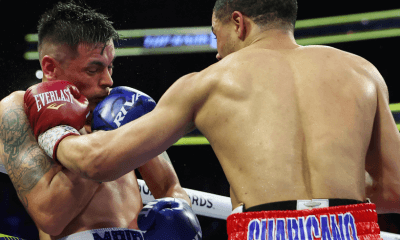
 Featured Articles3 weeks ago
Featured Articles3 weeks agoUndercard Results and Recaps from the Inoue-Cardenas Show in Las Vegas
-
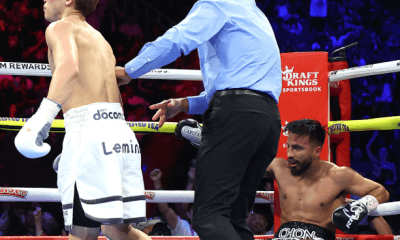
 Featured Articles3 weeks ago
Featured Articles3 weeks agoBombs Away in Las Vegas where Inoue and Espinoza Scored Smashing Triumphs















Pingback: copy magic alhambra bracelet
Pingback: montre cartier or blanc pas cher
Pingback: van cleef clover imitation bracelet